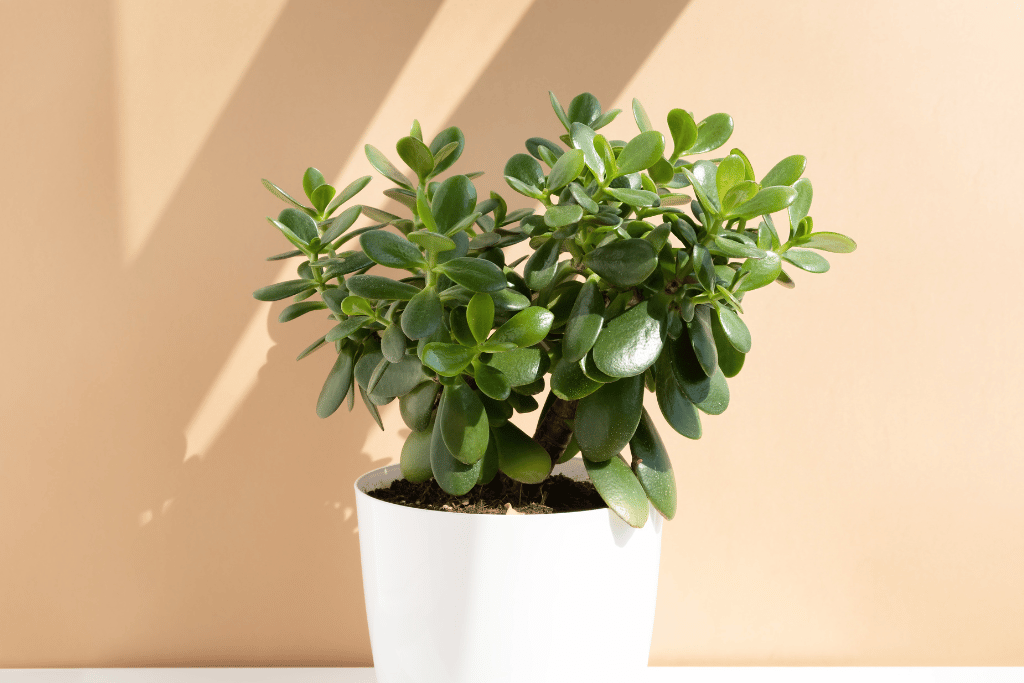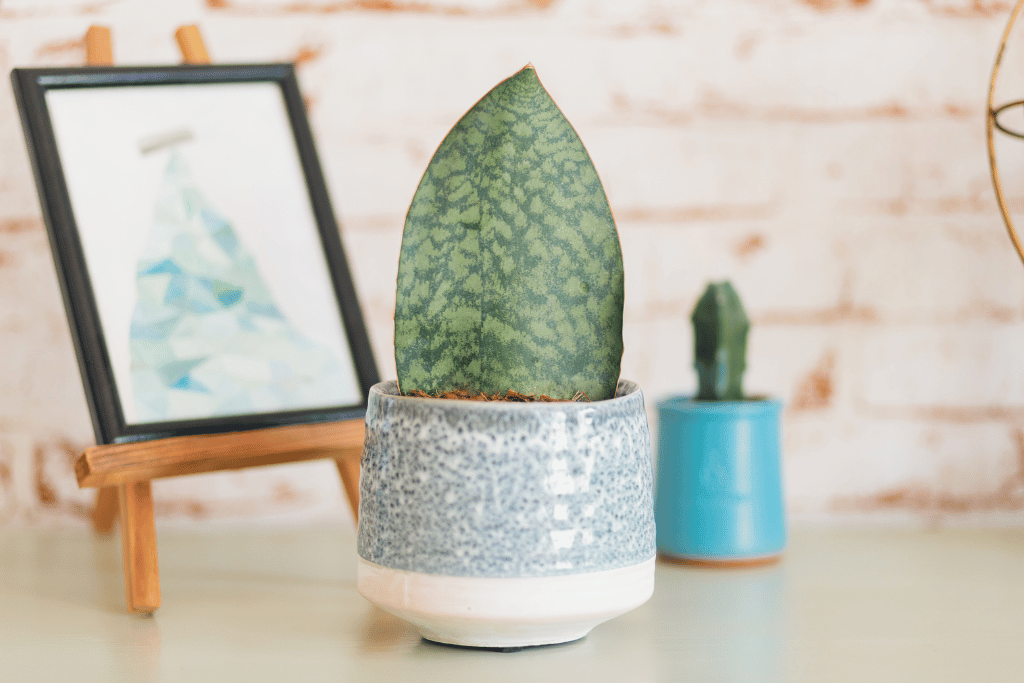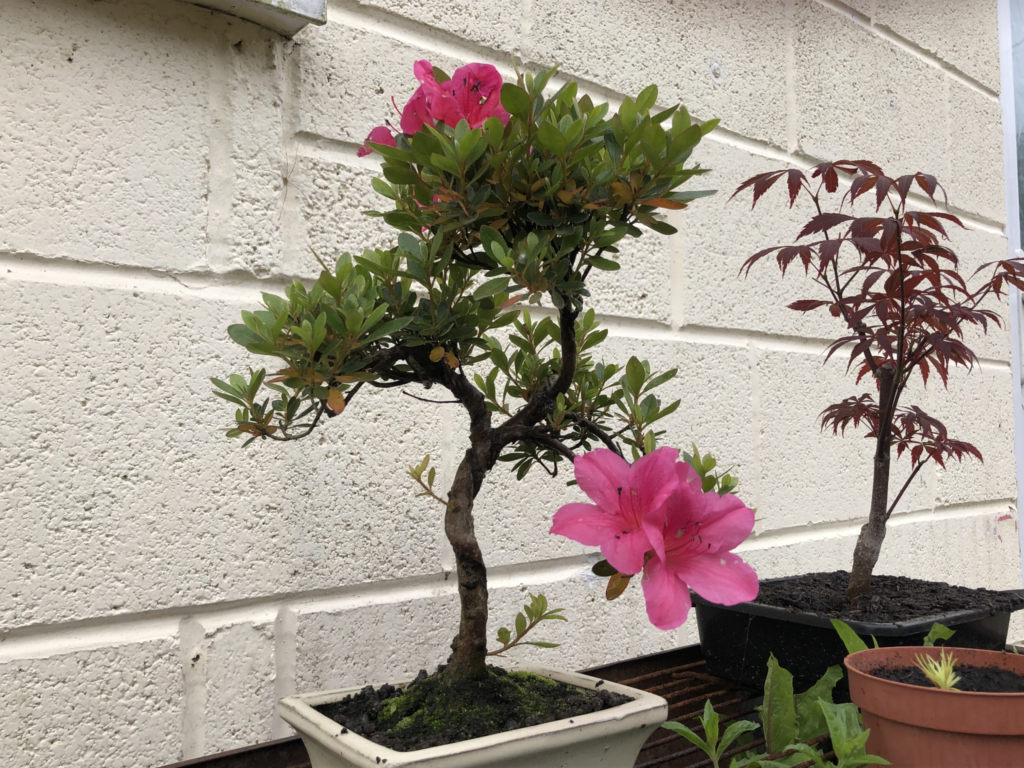
If you’re used to looking at plump, upright, and deep green leaves on your jade plant, you might have a hard time understanding why its leaves are suddenly wrinkled or droopy.
Wrinkled leaves on a jade plant are a way of the plant telling you something.
Wrinkled leaves can appear either due to overwatering or underwatering. However, in the case of overwatering, they are also accompanied by yellowing. Other causes for wrinkled leaves on a jade plant are excessive direct sunlight, water-repellent soil, and placing pots near the sources of wind currents.
Stick with me as I dive deeper into these reasons and how you can bring your plant to its former glory in each case. But first, a little bit about the plant itself.
Jade Plant: Overview
Botanically known as Crassula ovata, the Jade plant is a favorite houseplant thanks to its low-maintenance and robust nature. Its thick fleshy levels are gray-green in color, oval, and domed on the top. Also known as a money plant in some cultures, it belongs to the family Crassulaceae, which has over 300 species of similar plants. The jade plant is considered lucky in Asian cultures and is often kept in homes for this reason.

The Jade plant is native to South Africa and grows on rocks and dry soil in its natural habitat. It can grow up to two meters tall but doesn’t reach its maximum height as a houseplant.
What Causes Wrinkled Leaves on Jade Plants?
Underwatering
Jade plants grow in an arid climate, dry soils, and infrequent rainfall. They naturally retain water in their leaves and roots, giving them a plump look. The water retention allows this plant to live out dry spells safely. Therefore, one of the most common reasons for wrinkled leaves on jade plants is under watering or drought-like conditions. When the plant is under-watered beyond what it can handle, its leaves start losing water, giving the shriveled and wrinkled look.
Also known as drought stress, a long period of being under-watered can also cause your jade plant to drop leaves off. A consistent and adequate watering schedule is the key to preventing underwatering. A jade plant needs watering once every two weeks during the active growth seasons (summer and spring). You can reduce the watering to once every 3-4 weeks during winter.
You should also learn the proper watering technique. For example, if you’re lightly watering your plant (1-2 inches of topsoil), the plant’s roots will not be able to absorb the water properly. You should thoroughly soak your jade plant in a pot with enough drainage holes so that excess water flows out.
Solution
If your jade plant already has wrinkled leaves, here’s how you can fix it.
Place your pot in a basin of water for about 10 minutes. This will allow the plant to generously soak up the water it needs so that it reaches its roots. Take the pot out after 10 minutes and repeat the process only when the soil feels almost dry.
But how would you know that?
The right way to check moisture in the soil is to lift the pot and check the soil from the drainage holes. If the soil still feels damp or moist, your plant is not ready for watering yet. If the soil feels slightly moist or completely dry, give it a soak in a water basin for another 10 minutes.
Typically, you’ll have to repeat this process every two weeks, as this is how long it takes for the soil to dry. However, don’t just take my word for it. Depending on your plant’s particular environment, climate, and circumstances, you might have to water it sooner or later than the 2-week period. To find the watering schedule right for your plant, periodically check the soil through the drainage holes after the first soak. As soon as the soil feels dry, whenever that may be, it is your cue to soak it again.
After repeating 2-3 cycles of this generous soaking, your jade plant leaves will return to their healthy, plump selves. This method closely mimics the natural environment of jade plants, and is the best way of keeping them healthy and thriving.
Overwatering
This might sound surprising and illogical, but you can also experience wrinkled leaves on a jade plant due to overwatering. However, there is one more symptom that you need to look out for if overwatering is the case: yellowing leaves.

A jade plant with wrinkled yellow leaves is telling you that it has been seriously overwatered. It usually happens when new gardeners follow a typical watering schedule they read online without considering their particular circumstances.
An overwatered jade plant is also at risk of root rot, so this issue must be addressed as quickly as possible.
Solution
The first step is to save the roots from imminent rot. Start by repotting your plant in fresh soil. Cut off brown and mushy leaves, and carefully remove the plant from its pot. Use a special potting mix for succulents or cacti, and move the plant into this new soil.
Ensure that the pot has a drainage hole. After moving the plant to the new pot, wait for the soil to dry out completely. This may take an extra couple of days. Once the soil is dry from top to bottom, soak the plant as discussed earlier. After soaking, don’t let the plant sit in the saucer, and empty the saucer of any excess water that drains out.
Incorrect Potting Soil
If you’re using a potting mix with peat moss, your jade plant may experience wrinkled leaves even if you water it enough. This happens because peat is hydrophobic. It repels water instead of absorbing it if it is completely dry.

When you water such a potting mix, the water simply runs off the soil and drains out of the pot. The roots don’t get enough water, leading your jade plant to have shriveled leaves. This is also hard to catch because you’re watering your plant enough, and it is draining well too.
Solution
The best way to fix this issue is to change the soil mix altogether. The best type of soil mix for a jade plant is the one made specifically for succulents or cacti. Once you have changed the soil, soak it in a basin for 10 minutes and repeat this process for 2-3 cycles.
Overexposure to Bright, Direct Sunlight
Leaving your jade plants in direct sunlight for too long can lead to water loss from leaves and soil, giving the leaves a shriveled appearance. Exposure to bright sunlight can also lead to scorched leaves, especially when the plant is quickly moved from a shaded area into sunlight without enough time to adapt.

The right amount of sunlight for a jade plant is about 6 hours of morning sun followed by shade for the remaining afternoon. This will fulfill the plant’s sunlight requirements without drying it too quickly or scorching it.
The Solution
If it is too late and your plant is already damaged from overexposure to direct sunlight, here’s what you can do.
Your first step is to permanently move the plant to a shaded area with indirect light until it recovers. Next, give your plant a generous soak for about 10 minutes. Once the soil is moist, remove the basin and let the water do the work. The key is to keep an eye on the soil and soak the plant as soon as it dries out. Your plant will return to its healthy self after 2-3 cycles of watering. You can then start putting it out in the morning sun for about six hours.
Exposure to Air Draughts
Even though jade plants do well in a well-ventilated area, placing them in front of current and draught sources can dry them out and wrinkle the leaves. Some places to avoid are close to air conditioners, heat sources, and near doors when it is cold outside.
The Solution
All you have to do is to relocate your jade plant to an area that is not a direct path of air currents. The leaves will return to their plump nature after 2-3 watering cycles.
Final Words
Gardening is a rewarding hobby only when you can educate yourself and keep calm. Plants are living organisms, and things like wrinkled leaves are a sign that they are under some sort of stress.
With this information in hand, you can carefully figure out the right cause, rule out other possibilities, and tend to your beloved plant accordingly. The key is not to be overwhelmed, as we all learn through our mistakes.



